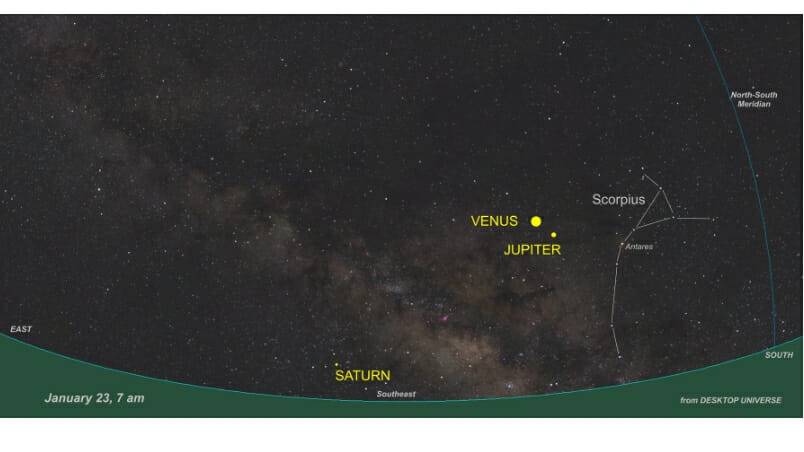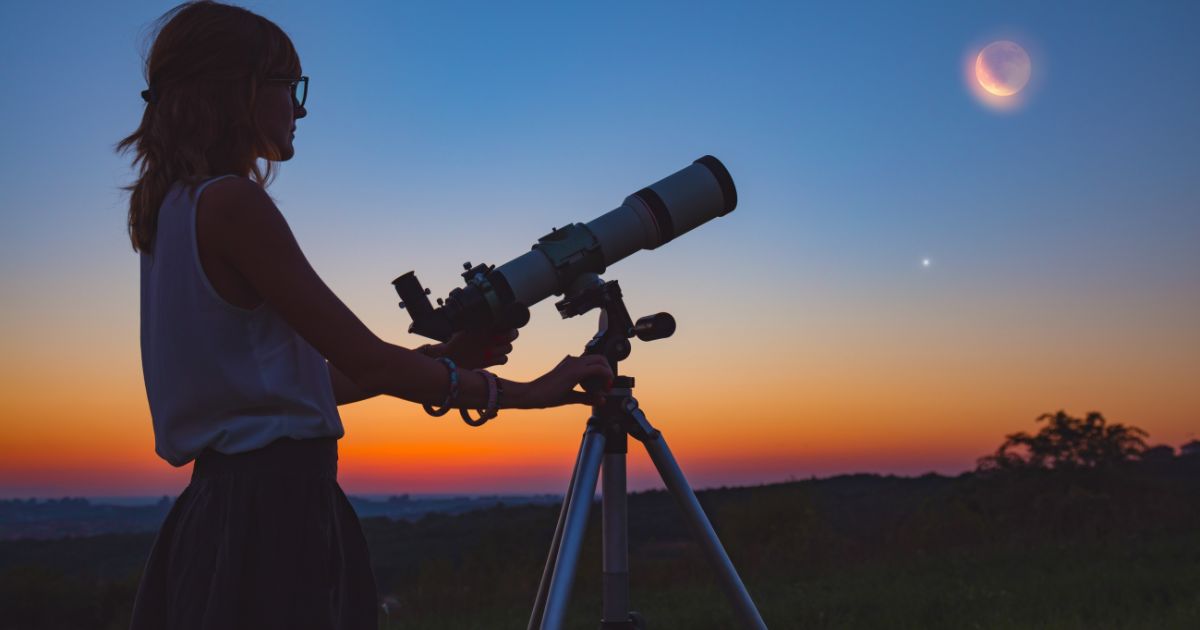Are you about to go to work at 7 am on this Wednesday morning? If you happen to live in most of southern Canada, look towards the south east and about 20-degrees up in the sky. You will see two brilliant jewels of the night – assuming the sky is clear of clouds. The brightest is Venus and the dimmer one is Jupiter – about 1/9th the brightness of Venus.
A lot goes into the apparent brightness of a planet. Jupiter is 12X larger than Venus (its visible disk has 144X the surface area of Venus) but it’s also 7.4-times farther from the illuminating Sun (1/55-times the sunlight), and it’s 7.4-times farther from us than Venus (so Jupiter is dimmed more by distance). And although on that day in January Venus shows only 59% its day-lit surface to us, Jupiter is only ½ as reflective as Venus. With all these, and other factors, Jupiter’s brightness comes in to be quite a bit dimmer than Venus.
Over the coming weeks, watch these planets in your morning sky as they slowly separate. Venus is closer to the Sun than the Earth, so it’s slowly moving ahead of us – and closer to the eastern horizon. However we’re catching up to Jupiter – making it visible earlier in the night. Jupiter will double in brightness by June 10 – when it’s closest to us and visible low in the south near midnight.
The accompanying figure will be good for your time zone. For northern Canada, the stars will be “tipped” towards the horizon. For those in the Yukon, NWT and Nunavut, the planets will be on your horizon or, sadly, below it.

One of Canada’s foremost writers and educators on astronomical topics, the Almanac has benefited from Robert’s expertise since its inception. Robert is passionate about reducing light pollution and promoting science literacy. He has been an astronomy instructor for our astronauts and he ensures that our section on sunrise and sunset, stargazing, and celestial events is so detailed and extensive it is almost like its own almanac.












